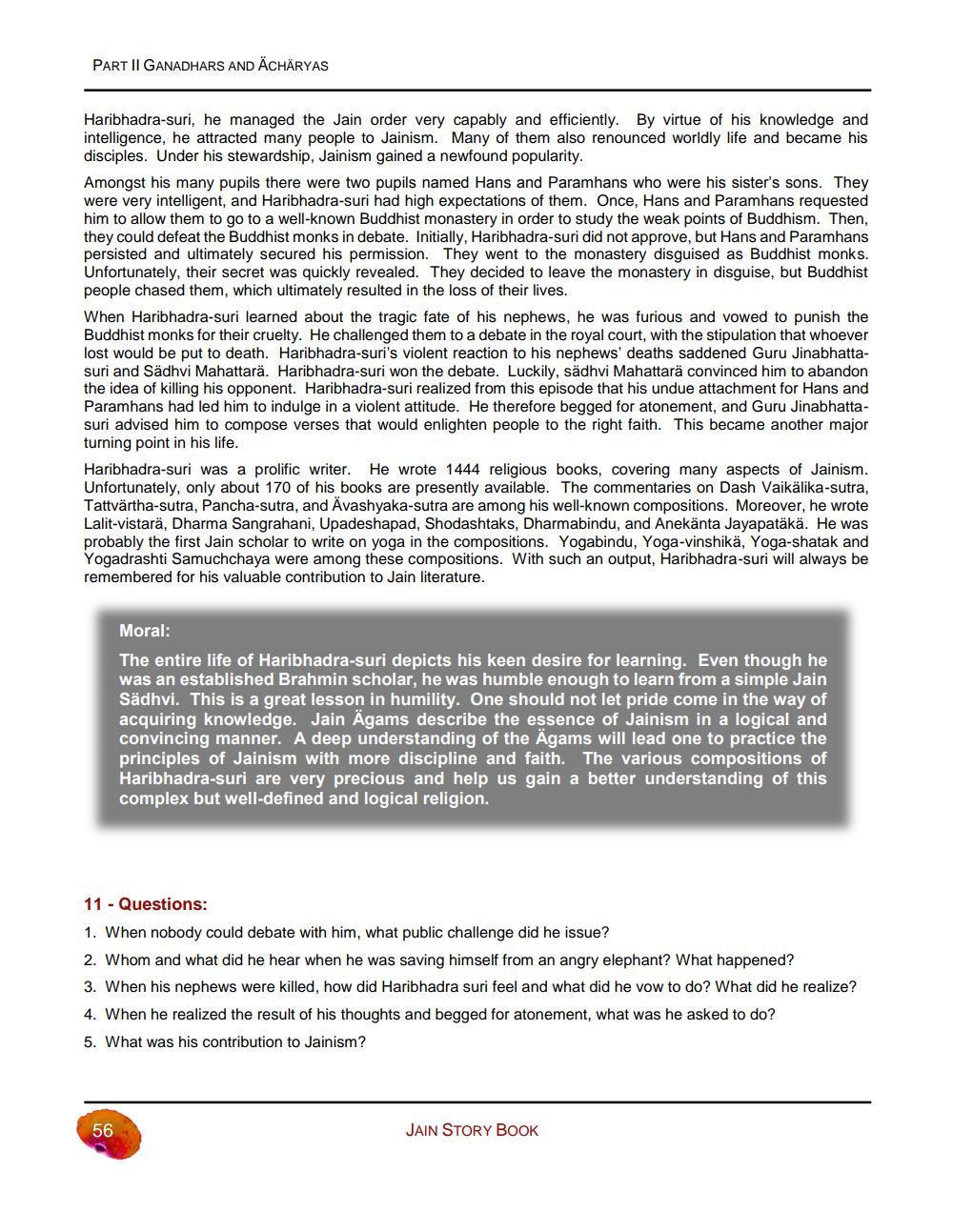________________
PART II GANADHARS AND ÄCHÄRYAS
Haribhadra-suri, he managed the Jain order very capably and efficiently. By virtue of his knowledge and intelligence, he attracted many people to Jainism. Many of them also renounced worldly life and became his disciples. Under his stewardship, Jainism gained a newfound popularity.
Amongst his many pupils there were two pupils named Hans and Paramhans who were his sister's sons. They were very intelligent, and Haribhadra-suri had high expectations of them. Once, Hans and Paramhans requested him to allow them to go to a well-known Buddhist monastery in order to study the weak points of Buddhism. Then, they could defeat the Buddhist monks in debate. Initially, Haribhadra-suri did not approve, but Hans and Paramhans persisted and ultimately secured his permission. They went to the monastery disguised as Buddhist monks. Unfortunately, their secret was quickly revealed. They decided to leave the monastery in disguise, but Buddhist people chased them, which ultimately resulted in the loss of their lives.
When Haribhadra-suri learned about the tragic fate of his nephews, he was furious and vowed to punish the Buddhist monks for their cruelty. He challenged them to a debate in the royal court, with the stipulation that whoever lost would be put to death. Haribhadra-suri's violent reaction to his nephews' deaths saddened Guru Jinabhattasuri and Sädhvi Mahattarä. Haribhadra-suri won the debate. Luckily, sädhvi Mahattarä convinced him to abandon the idea of killing his opponent. Haribhadra-suri realized from this episode that his undue attachment for Hans and Paramhans had led him to indulge in a violent attitude. He therefore begged for atonement, and Guru Jinabhattasuri advised him to compose verses that would enlighten people to the right faith. This became another major turning point in his life.
Haribhadra-suri was a prolific writer. He wrote 1444 religious books, covering many aspects of Jainism. Unfortunately, only about 170 of his books are presently available. The commentaries on Dash Vaikälika-sutra, Tattvärtha-sutra, Pancha-sutra, and Ävashyaka-sutra are among his well-known compositions. Moreover, he wrote Lalit-vistarä, Dharma Sangrahani, Upadeshapad, Shodashtaks, Dharmabindu, and Anekänta Jayapatäkä. He was probably the first Jain scholar to write on yoga in the compositions. Yogabindu, Yoga-vinshikä, Yoga-shatak and Yogadrashti Samuchchaya were among these compositions. With such an output, Haribhadra-suri will always be remembered for his valuable contribution to Jain literature.
Moral:
The entire life of Haribhadra-suri depicts his keen desire for learning. Even though he was an established Brahmin scholar, he was humble enough to learn from a simple Jain Sädhvi. This is a great lesson in humility. One should not let pride come in the way of acquiring knowledge. Jain Ägams describe the essence of Jainism in a logical and convincing manner. A deep understanding of the Agams will lead one to practice the principles of Jainism with more discipline and faith. The various compositions of Haribhadra-suri are very precious and help us gain a better understanding of this complex but well-defined and logical religion.
11 - Questions:
1. When nobody could debate with him, what public challenge did he issue?
2. Whom and what did he hear when he was saving himself from an angry elephant? What happened?
3. When his nephews were killed, how did Haribhadra suri feel and what did he vow to do? What did he realize?
4. When he realized the result of his thoughts and begged for atonement, what was he asked to do?
5. What was his contribution to Jainism?
56
JAIN STORY BOOK




